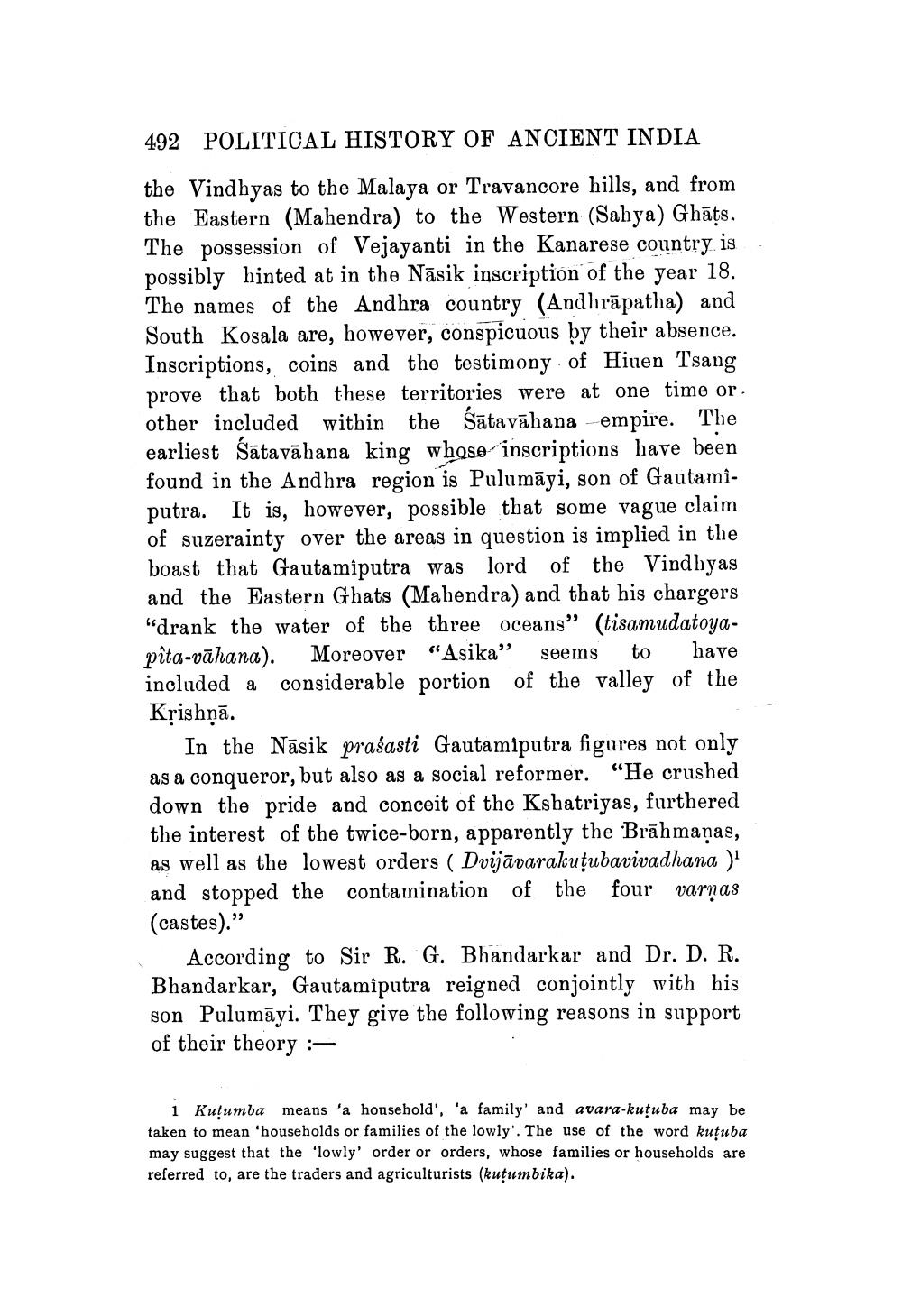________________
492 POLITICAL HISTORY OF ANCIENT INDIA
the Vindhyas to the Malaya or Travancore hills, and from the Eastern (Mahendra) to the Western (Sahya) Ghāts. The possession of Vejayanti in the Kanarese country is possibly hinted at in the Nāsik inscription of the year 18. The names of the Andhra country (Andhrāpatha) and South Kosala are, however, conspicuous by their absence. Inscriptions, coins and the testimony of Hiuen Tsang prove that both these territories were at one time or other included within the śātavāhana empire. The earliest Sātavāhana king whose inscriptions have been found in the Andhra region is Palumāyi, son of Gautamiputra. It is, however, possible that some vague claim of suzerainty over the areas in question is implied in the boast that Gautamiputra was lord of the Vindhyas and the Eastern Ghats (Mahendra) and that his chargers "drank the water of the three oceans" (tisamudatoyapîta-vāhana). Moreover "Asika” seems to have included a considerable portion of the valley of the Krishṇā.
In the Nāsik prasasti Gautamiputra figures not only as a conqueror, but also as a social reformer. "He crushed down the pride and conceit of the Kshatriyas, furthered the interest of the twice-born, apparently the 'Brāhmaṇas, as well as the lowest orders ( Dvijāvarakuțubavivadhana ) and stopped the contamination of the four varnas (castes).”
According to Sir R. G. Bhandarkar and Dr. D. R. Bhandarkar, Gautamiputra reigned conjointly with his son Pulumāyi. They give the following reasons in support of their theory -
1 Kutumba means 'a household', 'a family' and avara-kutuba may be taken to mean 'households or families of the lowly'. The use of the word kutuba may suggest that the 'lowly' order or orders, whose families or households are referred to, are the traders and agriculturists (kuțumbika).




